1. Introduction
Student Privacies and Learnings in Education, In today’s digital learning environment, the concept of student privacy is more relevant than ever. Student privacy refers to the protection of personal, academic, and behavioral data collected during the educational process. With the increased integration of technology into classrooms—such as online learning platforms, learning management systems, and digital assessments—students are constantly generating data that can be used for improving learning experiences but also presents risks if not properly secured. Educational institutions have a moral and legal responsibility to ensure that sensitive information is not exploited or exposed.
Privacy is not limited to data security; it also encompasses the right of students to learn in environments free from undue surveillance and unnecessary scrutiny. Understanding student privacy is essential for maintaining trust between students, educators, and institutions. When privacy is compromised, students may become reluctant to fully participate, affecting their academic performance and emotional well-being. Thus, safeguarding student privacy is fundamental for ensuring safe, equitable, and effective learning experiences across all levels of education.
2. Importance of Privacy in the Learning Process
Privacy is a crucial component in fostering a conducive and respectful learning environment. When students feel that their personal and academic data are protected, they are more likely to engage freely in educational activities. Respecting student privacy helps create a sense of trust and security in the classroom, whether physical or digital. This psychological safety allows learners to take academic risks, voice opinions, and express creativity without fear of judgment or exposure. Furthermore, privacy protection promotes inclusivity, especially for marginalized students who may face stigma or discrimination if sensitive data is misused.
Academic integrity is also strengthened when privacy is prioritized, as it reduces opportunities for surveillance-based policing and instead encourages self-motivation. Protecting student information, such as learning disabilities, socio-economic background, or mental health conditions, ensures equitable treatment and guards against profiling or bias. Overall, prioritizing privacy within educational systems supports students’ intellectual and emotional development, laying a foundation for effective and meaningful learning.
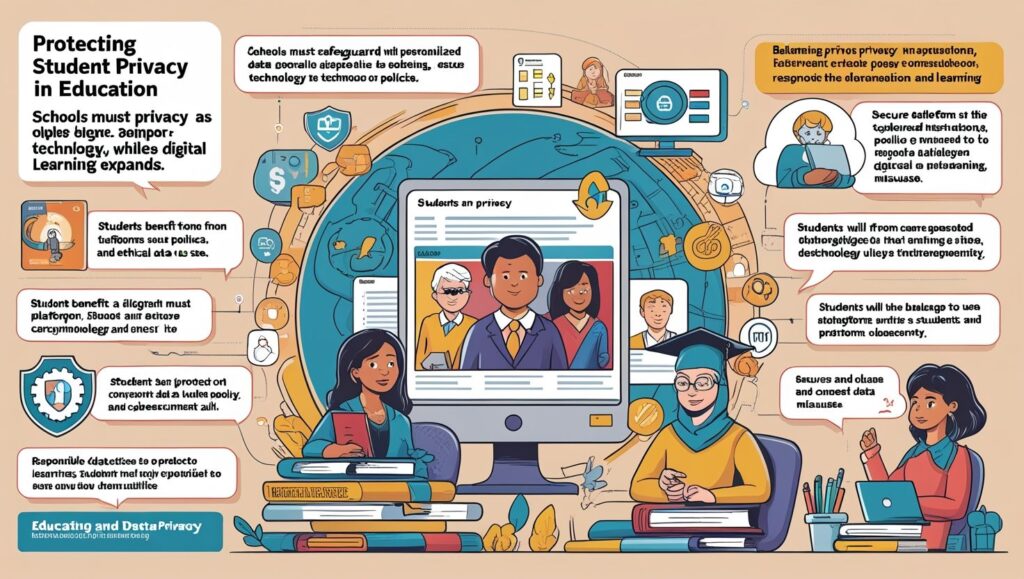
3. Legal Frameworks Supporting Student Privacy
Governments and educational authorities around the world have implemented laws and regulations to safeguard student privacy. In the United States, the Family Educational Rights and Privacy Act (FERPA) grants parents and eligible students rights over their educational records and restricts access to third parties without consent. Similarly, the Children’s Online Privacy Protection Act (COPPA) provides specific protections for children under 13, especially in digital learning tools. In Europe, the General Data Protection Regulation (GDPR) ensures that students’ personal data is processed lawfully, fairly, and transparently.
These legal frameworks establish strict guidelines for how schools, teachers, and tech vendors collect, use, and share student data. In many developing countries, privacy protections are still evolving, often lacking comprehensive enforcement mechanisms. However, the increasing awareness of cyber risks and surveillance has prompted reforms in educational policies worldwide. Adherence to legal privacy standards not only protects institutions from lawsuits but also cultivates ethical responsibility in handling student data, promoting a culture of trust and transparency.
4. Digital Learning Platforms and Privacy Risks
The growing use of digital platforms for instruction, assessment, and communication has raised significant privacy concerns. Tools such as Google Classroom, Zoom, Microsoft Teams, and other learning management systems collect and store vast amounts of student data, including login history, assignments, assessments, and personal identifiers. While these platforms enable flexible and accessible learning, they also pose risks if not properly managed. Data breaches, unauthorized access, and misuse by third-party vendors are common threats.
Moreover, many platforms track user behavior for analytics or marketing, often without adequate transparency or consent. Some applications also use facial recognition or location tracking, adding layers of surveillance that can infringe on students’ rights. Schools must ensure that the tools they adopt comply with privacy regulations and best practices. Educators should be trained to use digital tools responsibly, and students should be educated on digital citizenship. Establishing clear data policies and obtaining informed consent are crucial steps in safeguarding privacy in online education.
5. The Role of Teachers in Protecting Student Privacy
Teachers play a frontline role in protecting student privacy both in physical classrooms and digital environments. As trusted facilitators of learning, they must ensure that students’ personal, academic, and behavioral data are treated with confidentiality and sensitivity. This includes secure handling of test results, learning difficulties, counseling records, and any private correspondence. In virtual classrooms, teachers should be cautious about using third-party apps without proper vetting, sharing screenshots or recordings, or publicly posting grades or assignments.
They must also guide students in protecting their own information, such as avoiding oversharing on public forums or social media linked to schoolwork. Teachers should model ethical behavior and digital responsibility by securing passwords, logging out of shared devices, and not storing sensitive data on unsecured platforms. Moreover, ongoing professional development in digital privacy and ethical teaching practices is essential. By taking these proactive steps, educators become advocates of student rights and help create a safe and empowering learning environment.
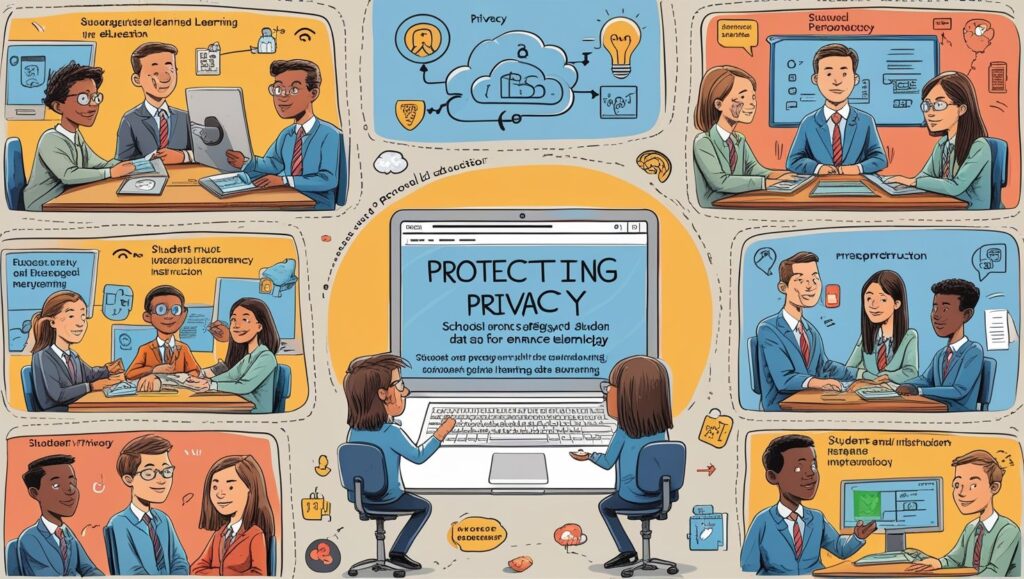
6. School Policies and Institutional Responsibilities
Educational institutions have the overarching responsibility to implement and enforce robust privacy policies. Schools must develop comprehensive frameworks that govern data collection, storage, usage, and sharing. These policies should be transparent and communicated clearly to all stakeholders, including students, parents, and staff. Appointing a Data Protection Officer (DPO) or privacy committee can help monitor compliance and address breaches effectively. Institutions must also assess the privacy standards of third-party vendors and sign agreements that limit data access to only what is necessary.
Physical security measures—such as secure file storage—and digital safeguards—like encryption and multi-factor authentication—should be standard practice. Regular audits and risk assessments help institutions stay ahead of emerging threats. Moreover, privacy education should be integrated into the curriculum, so students understand their rights and responsibilities. In case of violations, schools should have a transparent grievance mechanism. Upholding privacy is not merely a legal obligation but a cornerstone of ethical, student-centered education.
7. Student Learning Analytics vs Privacy Concerns
Learning analytics—the use of student data to assess performance, engagement, and behavior—offers powerful tools for personalized education. However, this practice also presents significant privacy dilemmas. When institutions collect data on attendance, grades, participation, or even time spent on platforms, the intention is often to identify struggling learners and enhance support. But excessive data mining, profiling, or automated decision-making can lead to ethical challenges. For instance, relying on predictive algorithms to determine a student’s success or failure risks reinforcing biases and limiting opportunities. Students may also feel surveilled, affecting their natural learning behavior.
To balance innovation and ethics, schools must adopt transparent data practices. Students and parents should be informed about what data is collected and how it will be used. Consent, anonymization, and data minimization should be standard. When used responsibly, learning analytics can enhance education without compromising privacy. It is crucial to find this equilibrium to ensure both technological advancement and student autonomy.
8. Surveillance in Classrooms: Ethical Implications
The integration of surveillance technologies in classrooms—like CCTV cameras, biometric attendance, and online monitoring tools—raises complex ethical concerns. While these tools are often justified for safety, discipline, or academic integrity, their overuse can infringe on students’ rights to privacy and freedom of expression. Continuous observation may create a culture of fear or anxiety, particularly among younger or vulnerable students. In online environments, proctoring software that uses webcam monitoring or screen recording during exams is increasingly scrutinized for being invasive. Moreover, there is a risk that surveillance data could be misused for punitive purposes or shared with authorities without proper cause.
Ethical education demands that surveillance be proportionate, transparent, and respectful. Schools should involve stakeholders in decision-making and provide opt-out options when possible. The goal should not be to control students but to support them. Replacing blanket surveillance with trust-building, engagement strategies, and clear behavioral guidelines fosters a more respectful and effective learning atmosphere.
9. Privacy Challenges for Different Needs and Minority Students
Different needs students and those from minority backgrounds often face greater privacy risks in educational settings. Disclosure of disabilities, learning difficulties, or cultural identities can subject these students to stigma, bullying, or discrimination if not handled confidentially. For example, a student requiring academic accommodations may not want their peers to know about their condition. Similarly, refugee or undocumented students may face fear of exposure or targeting if their data is mishandled.
Schools must adopt inclusive privacy practices that protect all students equitably. Individual Education Plans (IEPs), health records, and counseling data must be securely managed and accessed only by authorized personnel. Culturally sensitive training for staff is essential to ensure respectful handling of diverse student identities. Additionally, institutions should work with community leaders and parents to create privacy policies that reflect the needs of marginalized groups. Ensuring privacy for vulnerable students is not only an ethical imperative but a prerequisite for providing truly inclusive education.
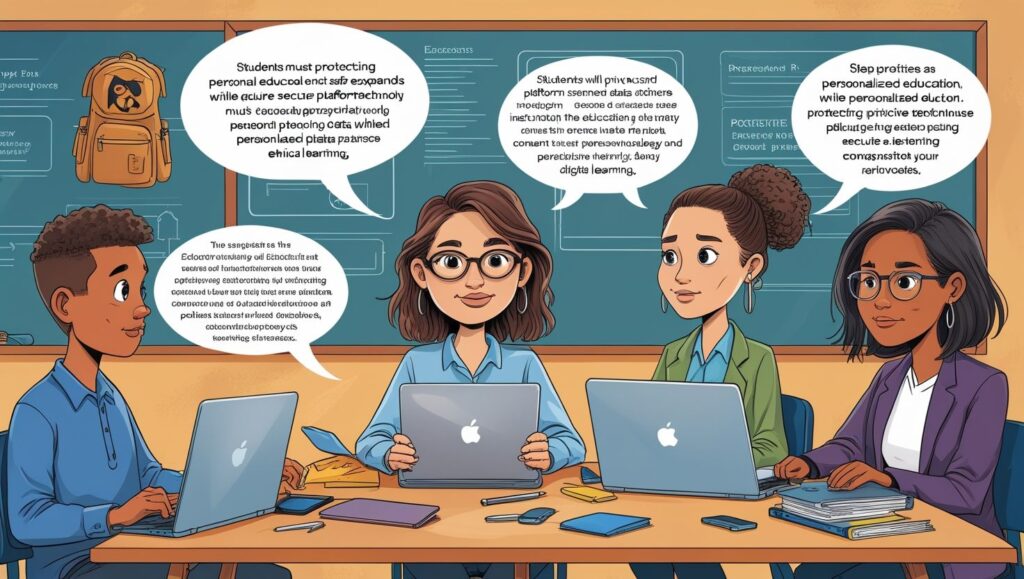
10. Empowering Students to Protect Their Privacy
Educating students about their privacy rights is essential in today’s interconnected world. While institutions and educators have responsibilities, students too must be empowered to safeguard their personal information. Digital literacy programs should include components on data privacy, secure browsing, social media use, and understanding consent. Students should learn to recognize phishing scams, avoid oversharing, and understand privacy settings on digital platforms.
They should also know their rights under laws like FERPA or GDPR and how to report a breach or unethical behavior. Encouraging students to take ownership of their digital footprint not only protects them but also nurtures responsible citizenship. Schools can conduct workshops, role-playing exercises, or simulations to teach these concepts in an engaging way. By integrating privacy education into regular subjects like ICT, civics, or ethics, students develop long-term awareness and confidence. Ultimately, a privacy-aware student is better equipped to navigate the academic and professional world with autonomy and resilience.
11. Parental Role in Student Privacy and Learning
Parents are vital stakeholders in ensuring both the privacy and academic growth of their children. Their involvement can enhance learning outcomes and reinforce ethical practices around data protection. Parents should be informed about school policies on data collection, surveillance, and digital tools used in classrooms. Active participation in school meetings and reviewing consent forms for digital tools is critical. At home, parents can reinforce good privacy habits—like teaching children not to share passwords, explaining online threats, and monitoring appropriate digital behavior without being intrusive.
They should also collaborate with teachers in addressing privacy issues and supporting individualized learning needs. In cases involving younger students, parental consent becomes legally significant, particularly under laws like COPPA. Additionally, parents must advocate for their children’s rights when privacy violations occur. With technological literacy and active engagement, parents act as bridges between the school system and their children’s personal development, ensuring that both learning and privacy go hand in hand.
12. Conclusion: Toward a Balanced Future
The evolving educational landscape demands a fine balance between data-driven learning and privacy protection. While digital innovations offer unprecedented opportunities to personalize education and improve outcomes, they also introduce new vulnerabilities that must be addressed thoughtfully. Protecting student privacy is not a barrier to progress but a foundation for ethical and effective education. Every stakeholder—schools, teachers, parents, and students—has a role to play in creating safe, respectful, and empowering learning environments.
By embedding privacy principles into policies, pedagogy, and daily practices, institutions can ensure that learning remains inclusive, equitable, and secure. Future efforts must continue to refine legal frameworks, invest in secure technologies, and build a culture of privacy awareness. In doing so, we prepare students not just to succeed academically, but to become informed, ethical participants in a digital society. The goal is clear: privacy and learning must coexist, reinforcing one another in the journey toward educational excellence.
References
- U.S. Department of Education. (2021). FERPA General Guidance. https://www2.ed.gov
- European Union. (2018). General Data Protection Regulation (GDPR).
- Common Sense Education. (2020). Student Privacy Overview. https://www.commonsense.org
- Future of Privacy Forum. (2022). Student Privacy Compass. https://studentprivacycompass.org
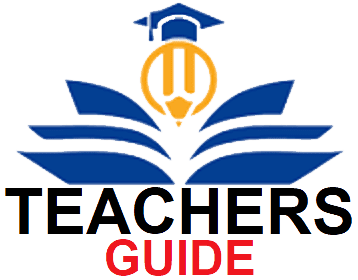
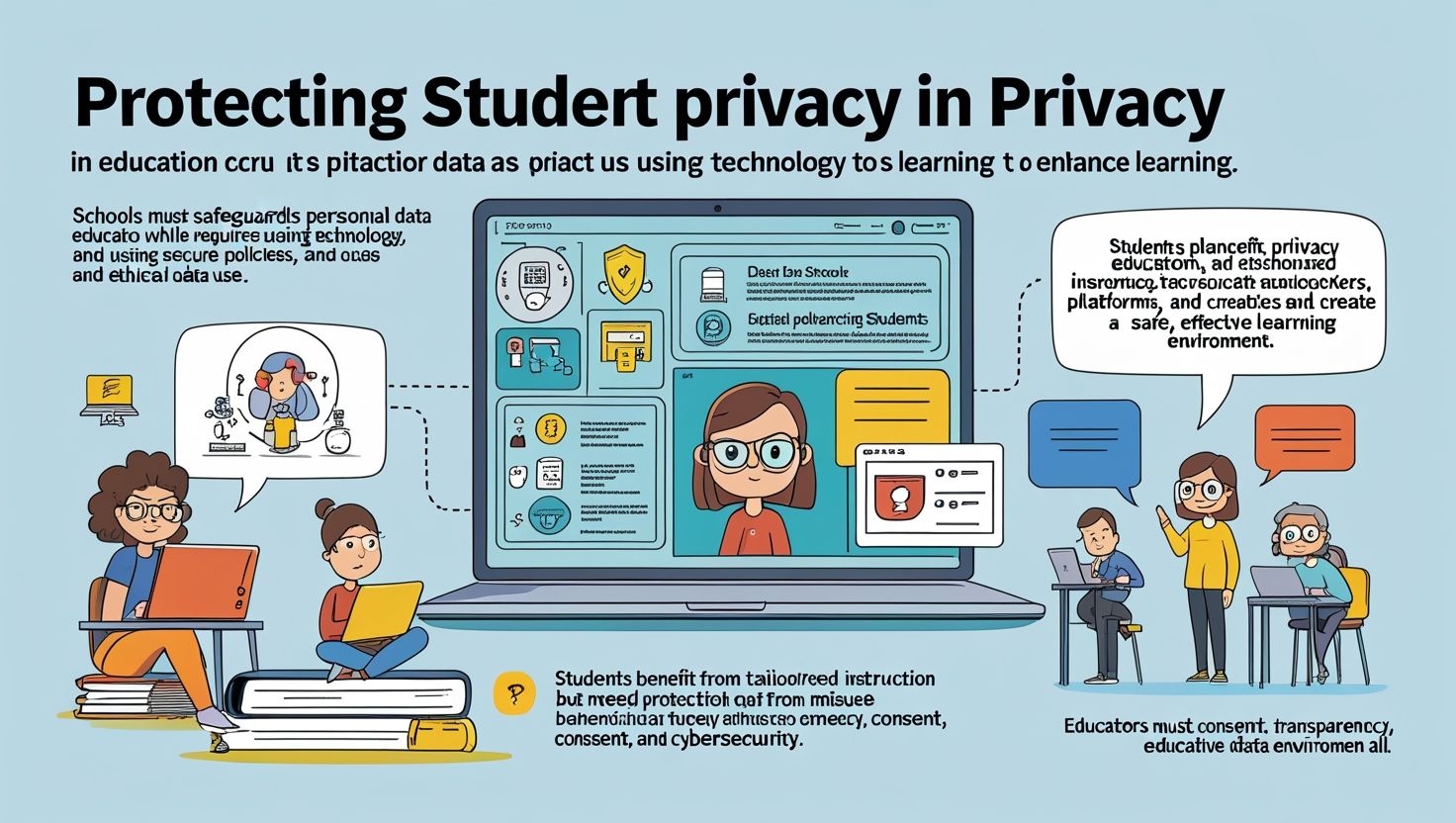
t714je
I know of the fact that currently, more and more people are now being attracted to video cameras and the subject of images. However, being a photographer, you should first commit so much time period deciding the model of dslr camera to buy as well as moving from store to store just so you can buy the least expensive camera of the trademark you have decided to select. But it isn’t going to end at this time there. You also have take into consideration whether you should obtain a digital dslr camera extended warranty. Thx for the good points I received from your site.
That is the suitable blog for anybody who needs to seek out out about this topic. You notice so much its almost arduous to argue with you (not that I truly would need?HaHa). You definitely put a brand new spin on a topic thats been written about for years. Great stuff, just nice!
1fxe0a
I like what you guys are up too. Such intelligent work and reporting! Keep up the superb works guys I have incorporated you guys to my blogroll. I think it will improve the value of my web site 🙂